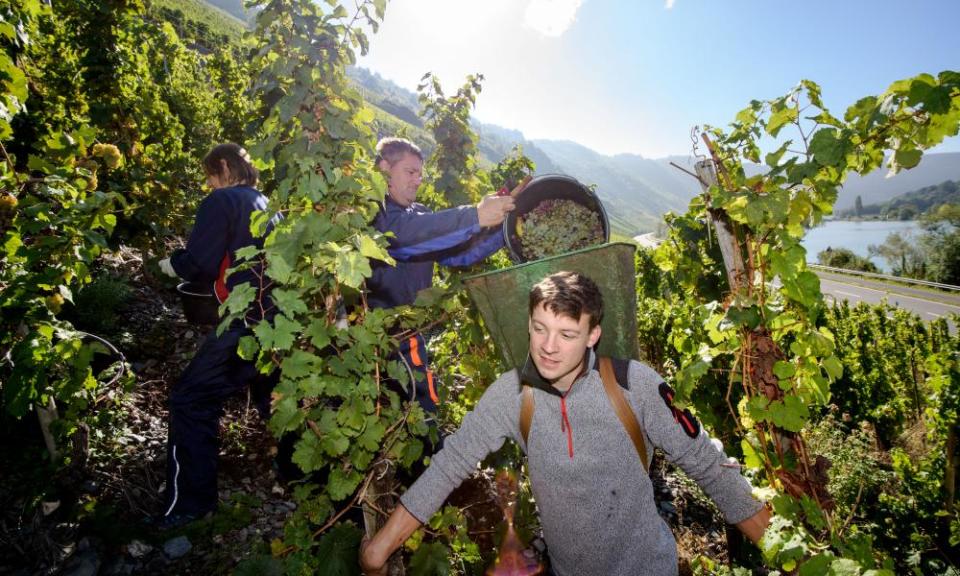German off-dry rieslings and the wines inspired by them

Dr Loosen Ürziger Würzgarten Riesling Kabinett, Mosel, Germany, 2017 (£15.99, Waitrose) Could a style of wine that has been considered terminally unfashionable for much of my wine-drinking life be about to make a comeback? The style I’m talking about, off-dry German riesling, certainly has some attributes that fit the drinking zeitgeist. It is naturally low in alcohol (often lower than 10%); it has a lightness of touch which makes it match well with delicately textured food, such as sushi, dim sum and vegan-friendly green vegetable and herb-based dishes; and it has just enough sweetness to cope with chilli or ginger spicing. All without losing, in the best examples, an ounce of flavour, and always with a mirror-in-sunlight burst of acidity. With its juicy exotic fruit and subtle spiciness, Dr Loosen’s latest pristine vintage provides a blueprint for the style.
Adnams Riesling 9%, Marlborough, New Zealand, 2017 (£9.99, Adnams) If the Germans are the masters of delicate off-dry riesling, then any optimism for its revival among UK drinkers owes at least as much to the emergence of wines from producers inspired by the masters of the Mosel and the Rheingau. Such people (and wines) can be found all over the world. In recent weeks, I’ve enjoyed Australian master craftsman Mac Forbes’s Riesling RS 19 2017 (from £18.20, Lay & Wheeler), with its pinpoint clarity, lime, white flowers and, as the name implies (RS 19 stands for 19g of residual sugar per litre of wine) a barely perceptible hit of sweetness; while, across the Tasman Sea, Dr John Forrest’s take on what the Germans would call the ‘kabinett’ style of riesling, which he makes for Adnams, is nimble, bright, cirtussy and good value.
Quinta do Soalheiro Alvarinho Docil 9%, Vinho Verde, Portugal, 2017 (£22, Solent Cellar) The recipe for making a wine at low alcohol by leaving a little sugar rather than fermenting it all into alcohol isn’t exclusive to riesling. New Zealand’s Forrest makes a wine in a similar style with sauvignon blanc, although for my money it doesn’t have quite the depth and liveliness of the riesling. One grape variety that does work, however, is the Iberian albariño (or alvarinho). Such, at least, is the conclusion drawn from tasting Quinta do Soalheiro’s Dócil, which has a delightful combination of peachiness, white flowers and teasing acidity. This shouldn’t be surprising: while very much their own thing, Soalheiro’s dry alvarinhos, such as Quinta do Soalheiro Alvarinho, Vinho Verde 2017 (£16.50, The Wine Society), have always reminded me of riesling, with the same electric tension, aromatic charm and ability to age.
Follow David on Twitter @Daveydaibach

 Yahoo News
Yahoo News 